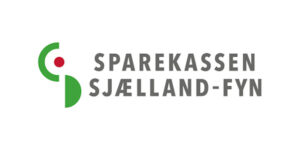ABN Amro stiller spørgsmålet, om den europæiske økonomiske håndtering af coronakrisen er den amerikanske overlegen. Svaret tenderer til et ja. Finanspolitisk har EU og de europæiske lande skudt flere midler end USA ind i en genstart af økonomien, mens den amerikanske centralbank har pumpet flere beløb ind i økonomien end ECB har. Men det sidste kan måske ændre sig senere i juni. ABN Amro ser en stor værdi i, at EU har en fleksibel politik, hvor den økonomiske stimuli rettes mod de hårdest ramte lande, især Italien og Spanien. Det eneste usikre punkt er, hvordan en ny EU-genopbygningsfond kommer til at operere.
Uddrag fra ABN Amro:
Is the European policy response now superior?
Global Macro: Big steps taken in Europe but challenges remain – Over the last few weeks, we have seen a major step up in the eurozone’s response to the Covid-19 crisis. On the fiscal side, the European response on aggregate is starting to look superior to that of the US. On the monetary policy side, the ECB is still lagging the Fed significantly in terms of balance sheet expansion, but will likely catch up.
Finally, both the ECB’s shift away from capital keys and the European Commission’s Recovery Fund imply that funds are skewed towards vulnerable member states. This is a significant step forward given the shock is asymmetric in terms of size and the absence of automatic transfers between member states. However, a number of significant challenges remain in the single currency area.
Eurozone fiscal impulse now bigger – The additional Italian and German fiscal stimulus packages have taken discretionary eurozone-wide fiscal stimulus in 2020 to around 4.3% GDP on our estimates (for more details of the German package see our note from yesterday). This is still short of the US discretionary stimulus, which stands at 6.7% GDP.
However, the automatic stabilisers are much larger in the eurozone reflecting the larger welfare state, and bigger government in general, which leads to a larger cyclical deterioration in the public finances. Adding the automatic stabilisers, the total fiscal impulse in the eurozone is now around 10% GDP, compared to just over 8% GDP in the US.
In addition, the momentum in the eurozone appears to be towards more discretionary measures, while in the US, the drive behind a second stimulus appears to have dissipated in recent weeks.
The ECB is lagging the Fed significantly, but will likely catch up – In last few weeks the ECB has been averaging around EUR 40bn per week of asset purchases. This compares to an average weekly amount of around USD 90bn by the Fed and this has actually come down from a weekly average of around USD 340bn in April. As a result, the Fed has expanded its balance sheet far more aggressively (see chart below).
Having said that, the ECB is likely to start closing the gap. Last week, it expanded the size of the PEPP by EUR 600bn. In addition, this month we are likely to see an enormous take-up of the first TLTRO tranche with the very generous conditionality. We think that with the PEPP announcement and net TLTRO take up, the ECB will likely close the gap in the coming months.
Policy shift towards vulnerable countries – The ECB has shown more flexibility in both the APP and PEPP with regards to the capital key for public sector purchases. The deviations from the capital key have meant that more of the ECB stimulus is directed towards Italy and Spain in particular.
Similarly, the European Commission’s proposed Recovery Fund would do much the same. The total package of EUR 750bn amounts to around 5.8% of total EU GDP, which will likely be front-loaded in the 2021-2023 period. The allocation of funds would be heavily skewed towards Spain and Italy. Under the EC proposal, total funds for Spain amount to 13.1% GDP, while they amount to 9.4% of GDP for Italy.
Challenges remain – Overall we are seeing a significant positive shift in Europe’s response to Covid-19. While the US was faster out of the tracks, the eurozone is catching up and even surpassing the US in some areas.
However, big challenges remain for the eurozone. The headwinds from the Covid-19 shock, in terms of higher unemployment, corporate defaults, capex retrenchment and supply chain problems are still to come. In addition, while it is positive that the European authorities are alleviating the problem of fragmentation, this is an issue that does not exist in the US.
Perhaps more importantly, the key question is what the European Recovery Fund will look like following negotiations between member states, as the proposal requires the unanimous approval of all 27 EU countries. There is a clear risk that it will be watered down. Finally, there is a bigger risk of deflation in the eurozone, which could be an extra drag on the economy over the coming quarters.










